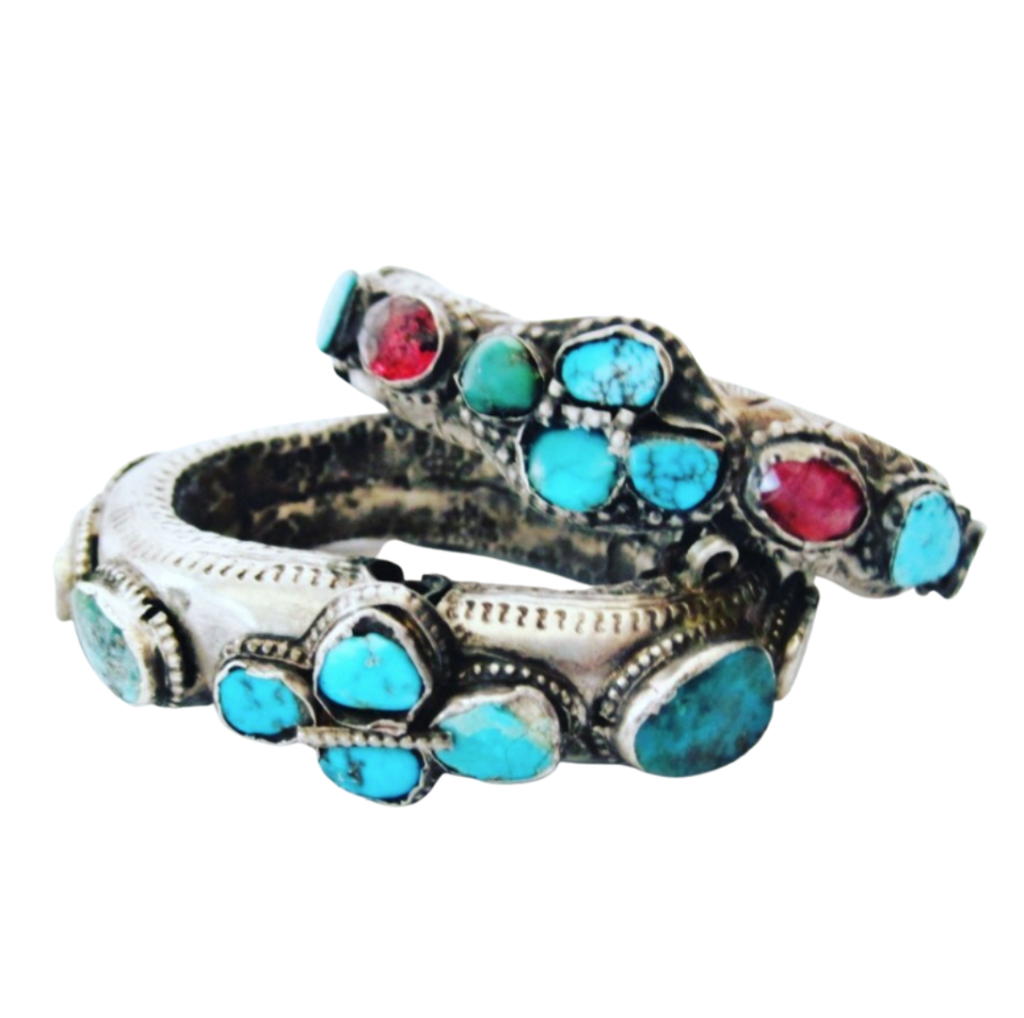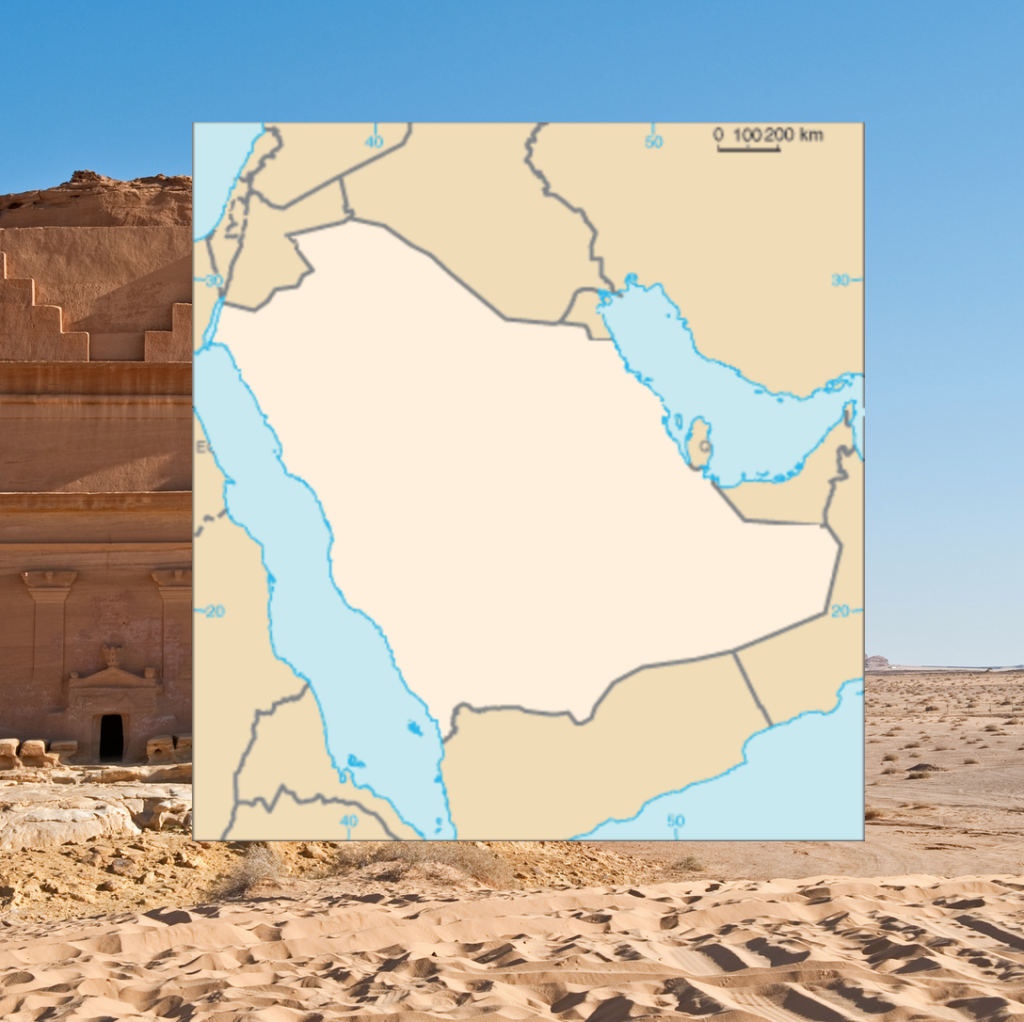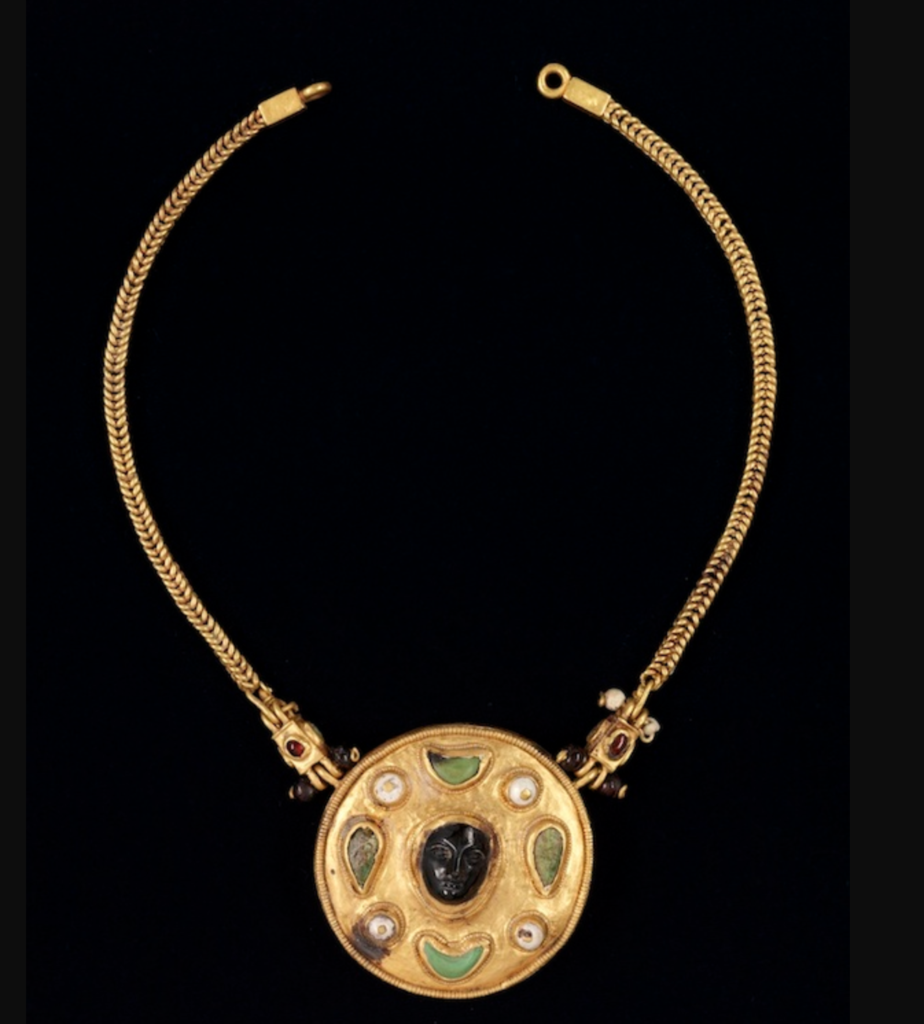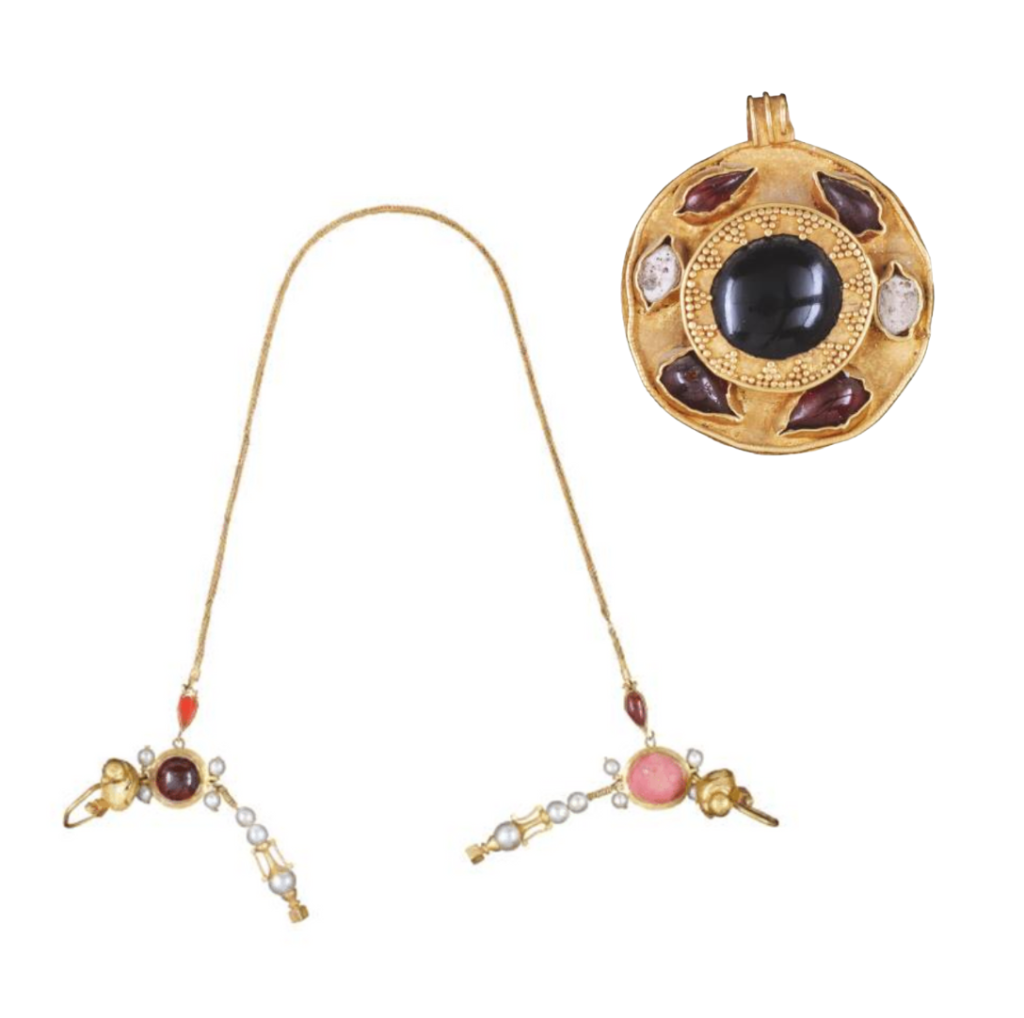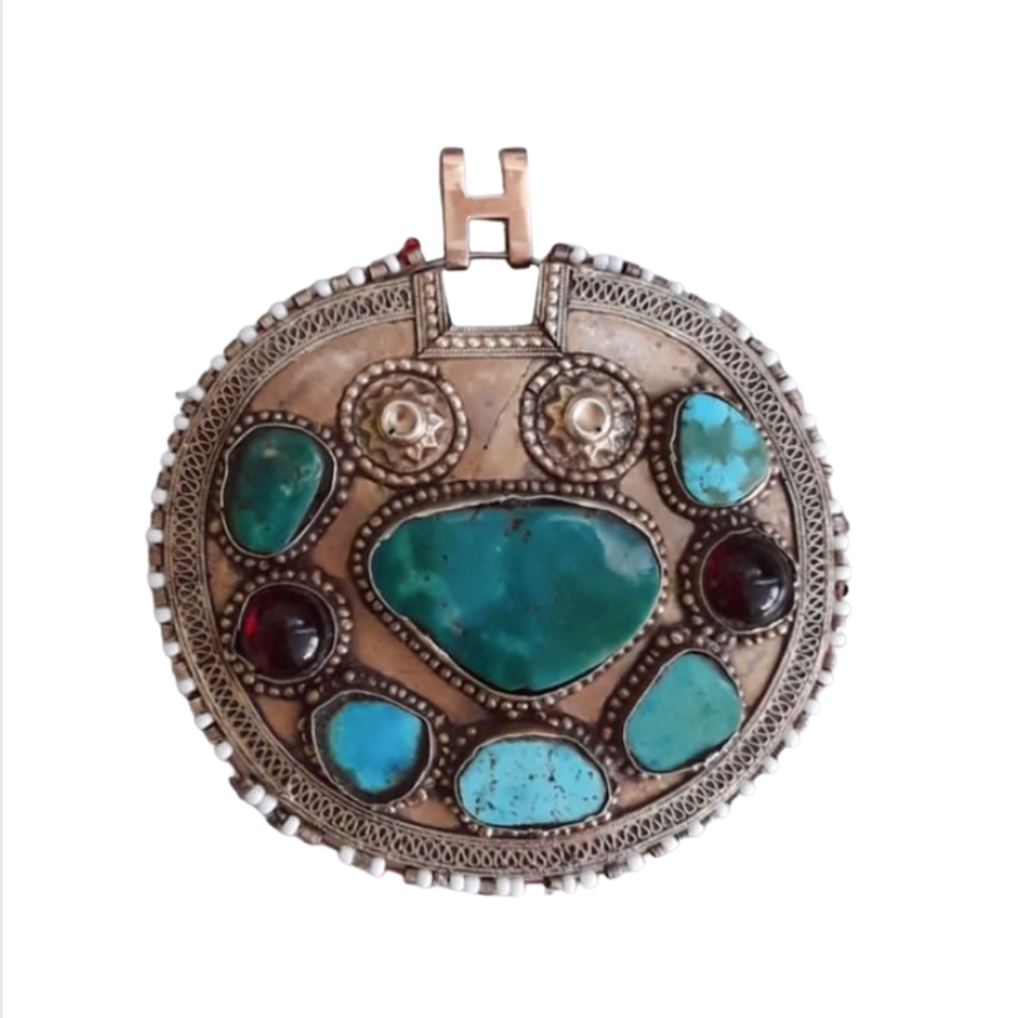In the blog series on jewellery, we will focus on the jewellery traditions of various countries in North Africa and South-West Asia. These jewellery traditions go further back in history than the geographical borders we know today, and of course, one country may be home to several cultural traditions. Both the historical context and the cultural heritage of a variety of peoples are visible in the jewellery worn, and we hope to introduce this wider scope of adornment and dress to you. In this post, we will look at the long history of jewellery in Saudi Arabia.
Prosperous trade
The vast Kingdom of Saudi Arabia is the largest state on the Arab Peninsula. Founded in 1932 by Abdulaziz bin Saud, the Kingdom is the most recent of the many states and empires that have flourished in this geographical area. Many caravan routes, stretching from oasis to oasis, have passed through the peninsula for millennia. Already in the 6th and 5th millennium BCE, obsidian was imported from Anatolia and pottery from Mesopotamia (current-day Iraq). The current region of the Hejaz was most likely where the ancient land of Midian may have been located. Merchants of Midian were quick to employ the newly domesticated camel, which allowed for an even better means of transport. That this innovation was lucrative, becomes apparent from the description of war bounty taken from the country: lots of gold bracelets, rings and earrings were among the loot around 1100 BCE.
Desert kingdoms
The oases formed trade hubs in this far-reaching network. Tayma, located in the northwestern Hejaz, has been inhabited since 5,000 BCE. Jewellery that survives from around 1,000 BCE, like bracelets and necklaces, is made of shells, mother of pearl, carnelian and faience, and the famous stelae in the shape of stylized humans from this area also show jewellery details like necklaces and belt ornaments.
Archaeological excavations show that beads were produced locally, as drills were found that were used to create carnelian beads. The shells that were used in jewellery, were obtained through trade from the Red Sea. That Tayma was home to more than just shells and beaded jewellery is apparent from an inscription on a stela found there, dating to ca 550 BC. In the text, king Nabonidus of the Neo-Babylonian empire (who had chosen Tayma as his residence), tells us about an offering he made of all sorts of precious stones, including again carnelian but also lapis lazuli.
Also in the northwestern Hejaz, about 110 kilometres from Tayma, is the oasis of al-‘Ula, where the old Arabian kingdom of Dedan flourished as a trade hub on the incense trail. Al-‘Ula also formed the basis of the Lihyan kingdom, which operated out of the ancient capital Dedan from the fifth century BCE onwards and grew wealthy as a redistributor of trade goods. Little is known of the way the inhabitants of this kingdom dressed, but from surviving statues, it appears that rings and bracelets were part of personal adornment.
We get a better glimpse of the jewellery worn in Saudi Arabia from for example the excavations at Qaryat al-Faw, dating to the 1st-3rd centuries CE. Here, colourful glass beads were strung with gold beads, elegant rosettes in gold were decorated with cloisonné work and twisted silver bracelets mirror the shape of bracelets worn by Bedouin tribes. In the northeast of Saudi Arabia, we find Thaj, where excavation brought spectacular jewellery to light: a gold pendant with turquoise, pearls and ruby, with a matching bracelet, show how the world of the 1st century CE passed through Saudi Arabia. The grave goods found in ‘Ayn Jawan, dating from the 2nd century CE, include gold pendants, hair decoration, bracelets, rings and earrings, some of which bear a striking resemblance to Bedouin jewellery.
Bedouin jewellery
This importance as a cultural hub only grew from the 7th century onwards. Both the expansions of the Arab empires as well as the many pilgrims from all over the world visiting the holy places of Mecca and Medina caused influences from North Africa to India and China to find their way to the peninsula. Within the Kingdom, several regional styles can be discerned. The jewellery of the central highlands of the Najd is recognisable by its use of gold and turquoise, which results in creations reminiscent of the pendants from ‘Ayn Jawan. The twisted silver bracelets of the Najd remind us of the bracelets worn in Qaryat al-Faw.
In the north and east, the silver jewellery is complemented by coral necklaces, glass bracelets and rings, and shows common designs with for example Afghanistan and Iraq. The south in turn shares techniques and styles with neighbouring Oman and Yemen: sometimes it is impossible to tell from which country a particular piece comes, as Bedouin used to travel across all three lands. Women in the Hejaz also added silver charms and coins to their burqa, and here once again the line between jewellery and dress is impossible to draw. The traditional jewellery of Saudi Arabia is famous for its wide variety, showing an interconnectedness with other cultures that date back millennia.
This blogpost is based on
- Althagafi, K. 2018. The Art of Saudi Traditional Jewellery: Rejuvenation for a contemporary world. PhD thesis, Australian National University
- Eichmann, R., H. Schaudig & A. Hausleiter 2006. Archaeology and epigraphy at Tayma (Saudi Arabia), in: Arabian archaeology and epigraphy, 2006-11, Vol.17 (2), p.163-176
- Franke, U. & J. Gierlichs (eds) 2011. Roads of Arabia. Wasmuth Verlag, Berlin
- Ross, H.C. 1978. Bedouin Jewellery in Saudi Arabia. Stacey International
- Ross, H. C. 1981. The Art of Bedouin Jewellery. Arabesque
